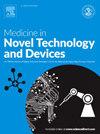CRISPR/Cas 系统相关表面增强拉曼光谱生物传感器在核酸检测方面的最新进展
Q3 Medicine
引用次数: 0
摘要
核酸在生长、遗传、进化等重要生命过程中起着决定性作用,探索不同类型的核酸检测技术一直是世界范围内的研究热点。与传统的核酸分析方法相比,表面增强拉曼光谱(SERS)检测具有灵敏度高、特异性好、谱带窄、样品要求少、操作简单、抗自发荧光和生物样品中水分干扰等优点。簇状规则间隔短回文重复序列(CRISPR)/Cas 系统在基因编辑和生物传感器领域受到广泛关注。CRISPR/Cas 系统的序列特异性识别能力与 SERS 技术的高灵敏度指纹特性相结合,为核酸检测提供了一种简单、快速、灵敏的方法。本文介绍了常用的 SERS Nanotags 核酸检测方法,包括 "三明治检测法"、"信号开关检测法 "和 HCR 信号放大法。然后,总结了 CRISPR 相关 SERS 检测的构建机制。由crRNA激活的CRISPR/Cas12a可以识别并锁定互补的目标双链DNA(dsDNA),然后顺式裂解dsDNA,反式裂解相邻的连接体ssDNA。聚合导致的 SERS 信号损失最终被用于高灵敏度的目标 DNA 检测。最后,介绍了 CRISPR/Cas 与 SERS 技术结合的一些典型应用,如 HIV-1 dsDNA、HBV DNA 和 AFB1 等。本文章由计算机程序翻译,如有差异,请以英文原文为准。
Recent advances in CRISPR/Cas systems-associated surface enhanced Raman spectroscopy biosensor towards nucleic acid detection
Nucleic acids play a decisive role in vital life processes, such as growth, heredity, and evolution, and exploring different types of nucleic acid detection techniques has always been a research hotspot worldwide. Compared to traditional nucleic acid analysis methods, surface-enhanced Raman spectroscopy (SERS) detection has advantages, such as high sensitivity, good specificity, narrow spectral bands, minimal sample requirement, simple operation, and resistance to interference from autofluorescence and water in biological samples. The clustered regularly interspaced short palindromic repeats (CRISPR)/Cas system has gained widespread attention in the fields of gene editing and biosensors. Combining the sequence-specific recognition capability of the CRISPR/Cas system with the high sensitivity fingerprinting properties of SERS technology offers a simple, rapid, and sensitive method towards nucleic acid detection. Here, common SERS Nanotags methods for nucleic acid detection are introduced, including “sandwich assay”, “signal switch assay” and HCR signal amplification. Then, the building mechanism of CRISPR-associated SERS detection is summarized. CRISPR/Cas12a activated by crRNA can recognize and lock the complementary target double-stranded DNA (dsDNA), followed by cis-cleavage of the dsDNA and trans-cleavage of the adjacent linker ssDNA. The loss of SERS signal based on aggregation is finally used for highly sensitive detection of the target DNA. Lastly, some typical applications through the integration of CRISPR/Cas and SERS technology are introduced, such as HIV-1 dsDNA, HBV DNA and AFB1 etc.
求助全文
通过发布文献求助,成功后即可免费获取论文全文。
去求助
来源期刊

Medicine in Novel Technology and Devices
Medicine-Medicine (miscellaneous)
CiteScore
3.00
自引率
0.00%
发文量
74
审稿时长
64 days
 求助内容:
求助内容: 应助结果提醒方式:
应助结果提醒方式:


